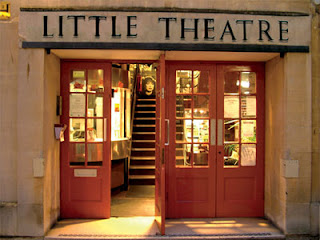

I was very pleased with the finished project and I felt that it was a big improve compared to previous projects that I have done throughout the year as I feel that I have improved technically, for example my camera handling has improved as I have taken the Panasonic camera out on a number of occasions to get more practice this has allowed me to get some interesting and different shots that I have used in my project. Also my use of the tripod has improved too as I can set up the Manfrotto tripod more efficiently and without hesitation as I can properly level it and position it correctly.
Also I feel that my editing has improved I can now find my way around Final Cut Pro more easier, for example I can now do sub clips more confidently than had done previously and add more to the layout and the presentation of my work by using title sequences.
I felt that I presented my project well by displaying it and packaging to make it more professional as I felt that the packaging explained more about what the project was about as pictures helped display this.
I felt that the flow of my project went smoothly, however it might not have been necessary to add title sequences as the interviewee does explains the question well enough for the audience to understand as title sequences could also effect the flow of the piece as it would waste time and audience participation.
I felt that the variety of shots was good as it made it more interesting for the audience as some of the shots, particularly when my dad is running are handheld as this creates a more realistic feel to it also I did a variety of shots, for example some were low angle shots, shots of him running from and towards camera and also point of view shots and the "nostril" shot of my dad. The film RocknRolla inspired me to do that shot.
There are parts in the documentary that don't work, for example the music it does work well in the piece as it helps the documentary have a flow and it breaks the interview questions nicely however the problem with the music is the audio levels which are not as smooth as I would like it to be.
There would be a point in the documentary when my dad is talking where the music would rise suddenly to introduce the next question.




















